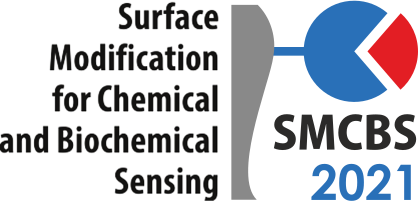10th International Workshop on Surface Modification for Chemical and Biochemical Sensing
Local information
Internet connection
There is wireless network connection in the lecture and seminar halls. There is WiFi connection available at the registration desk in the Institute of Physical Chemistry in Warsaw.
Mobile phones
Mobile networks and carriers in Poland use 2 GSM bands (900/1800), 2 UMTS (B1/B8) bands, and 4 LTE bands (B1/B3/B20/B38). Find out if your unlocked phone or mobile device will work in Poland: FrequencyCheck.
When calling from your mobile to a stationary phone in Żelechów use the +(48 25) prefix.
Currency and credit cards
The currency unit in Poland is the Polish zloty (zł), which is subdivided into 100 grosze (gr). The currency code is PLN.
Visa and Mastercard are widely accepted in Poland. Discover cards will only be accepted by some ATMs, e.g., those of Citibank and Euronet. American Express cards can be used in ATMs run by, e.g., the Millenium and Pekao banks.
Time zone
The time zone in Poland is GMT+1 h (Central European), which is the same as that in Germany and Spain, but 1 h ahead of that in Portugal and the U.K. as well as 2 h behind of that in Moscow.
Emergency telephone numbers
European emergency number: 112
Police: 997 | Fire service: 998 | Ambulance: 999
Electricity
Power voltage is 230 V and the frequency is 50 Hz. CEE 7 standards.
Ground connection is afforded with an extra pin in a CEE 7/5 socket.
Weather and clothing
The weather in November in Poland is shining with rainbow of falling colored leaves and because of that this season of the year is called the Polish gold fall. But it may be misty and rainy equally well and evenings may be quite cold. The average daytime temperature varies from 0 to 15 °C. There is a chance of rain, so that an umbrella, raincoat and comfortable walking shoes are advisable. Do not forget to check the weather forecast before departure for Poland.
Shopping
Polish craftwork is fascinating: wood craving and hand-woven rugs come mostly from the Zakopane region of the Carpathians Mountains. Other souvenirs include glass, hand-woven baskets, paper cut-outs as well as pottery and cut lead glass. One of the most common souvenirs is jewelry of amber from Baltic Sea. (Ancient Roman merchants used to come here to get it and the Cesar throne was richly amber encrusted.) Each individual piece of amber can be fashioned into a pendant, ring, bracelet, or earrings. Most highly prized is a piece of amber with a prehistoric insect preserved inside, though it is a rare find. Poland is also known for its silver jewelry, which is sometimes combined with amber to create uniquely Polish pieces of art jewelry.
Food
Poles are known for their hospitality and appreciation of good food. Polish meals offer a wide selection of delicacies ranging from fresh game in season to Baltic herring. Red beetroot soup (borsch) is unique. Well known are Polish smoked sausage (kiełbasa) and stuffed cabbage (gołąbki). Dumplings (pierogi) come stuffed with meat or cottage cheese and potatoes, or blueberries, or sauerkraut and mushrooms. 'Bigos' is a stew made of sauerkraut, meat and mushrooms, while roast duck comes stuffed with apples. For dessert, try pastries with poppy seeds or, perhaps, a Polish donut filled with preserved fruit (pączek).








